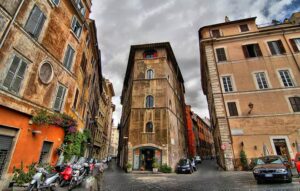
The Portugal Golden Visa (ARI) program, launched in 2012, was initially based on real estate investments, but after reforms, it is now more focused on funds, donations, and capital investments.
Key parameters and changes.
1) In 2023, real estate was excluded as the main route for the program, forcing investors to switch to funds, business projects, or donations.
2) The minimum investment in a fund is €500,000.
3) In 2024, a record 4,987 golden visas (main applications + dependents) were issued, which is 72% more than a year earlier.
4) Since the program began, more than 15,619 visas have been issued to investors and about 22,000 visas to family members (as of September 2024).
China remains the largest country of origin for investors, but interest from the US, Brazil, Turkey, and other countries has increased. Changes to the program have prompted investors to diversify their investments, favoring funds and non-interest-bearing methods.
Source: http://relocation.com.ua/portugal-golden-visa-program-program-features-from-relocation/

Agrotrade, an agricultural holding company whose land bank is concentrated in the Kharkiv, Sumy, Chernihiv, and Poltava regions, has noted lower efficiency in frontline areas and would like to strengthen its business model through relocation.
“We want to grow. We want to strengthen our business model by relocating our land bank and forming land clusters in safer regions,” said Agrotrade CEO Serhiy Nechyporuk at the Agro Finance 2025 Conference, recently held by Oschadbank.
“We tell the banks: give us funds, we will relocate our land bank, create a successful cluster, for example, in Vinnytsia, Zhytomyr, Khmelnytskyi, and we will be more resilient. And bankers tell us: well, let’s finance it with your own funds, and then we’ll think about how we can refinance you,” he described the discussion with banks.
According to Nechyporuk, bankers are ignoring the sound business logic of the agricultural holding, which has strong agronomic and agrotechnological expertise that it can scale up, but at the same time they are refusing to increase financing limits due to the need for greater loan reserves for a company operating in frontline regions.
Currently, according to him, some of the company’s land is located 10 km from the line of combat.
“It is difficult to be effective when there are constantly REBs working in the fields: we have now adopted a precision farming strategy (using drones) and, unfortunately, we cannot implement it on two clusters (out of the company’s five clusters),” Nechyporuk gave an example.
He added that the company also has “agronomic combat” bonuses for agronomists who go out to certain fields that are considered risky.
According to the CEO of Agrotrade, if we do not focus on supporting the frontline regions now, a “wild economic frontline field” will soon appear there.
Nechyporuk also noted a decline in the trend toward processing products due to a shortage of raw materials, which arose against the backdrop of a reduction in Ukraine’s agricultural land bank from 25 million hectares to 20 million hectares due to Russia’s full-scale aggression.
“There used to be a very strong trend towards processing agricultural products, but unfortunately, it has now declined. We probably invested a lot in it, but now there is not as much raw material because we are losing our land,” he said.
The Agrotrade Group of Companies is a vertically integrated holding company covering the entire agro-industrial cycle (production, processing, storage, and trade in agricultural products). It cultivates over 70,000 hectares of land. Its main crops are sunflower, corn, winter wheat, soybeans, and rapeseed. It has its own network of elevators with a one-time storage capacity of 570,000 tons.
The group also produces hybrid seeds of corn, sunflower, barley, and winter wheat. In 2014, a seed plant with a capacity of 20,000 tons of seeds per year was built on the basis of the Kolos seed farm (Kharkiv region).
The founder of Agrotrade is Vsevolod Kozhemyako.

The Relocation project has analyzed and created a brief overview of the state of the office real estate market in Rome in the first half of 2025. Rome, while remaining the administrative and cultural center of Italy, is gradually strengthening its position as a business hub. However, the office real estate market here is traditionally different from Milan, the country’s main financial center: investor and tenant activity is lower, and the supply of modern offices is limited.
In the first half of 2025, the average rental rate for Class A offices in central Rome (EUR, Prati, and the historic center) was €31–34 per square meter per month, approximately 2% higher than last year.
Outside the center, in the Tiburtina, San Giovanni, and GRA areas, rates remain at €18–24 per square meter.
According to Cushman & Wakefield consultants, demand is primarily driven by government agencies, diplomatic missions, and companies in the energy and services sectors, while demand from international IT companies in Rome is significantly lower than in Milan.
The average purchase price of office real estate in Rome in 2025 ranges from €3,600 to €4,200 per square meter in central areas, while in the suburbs (EUR periphery, Aurelio, Appia Nuova), prices range from €2,000 to €2,600 per sq. m.
Investors are cautious: according to BNP Paribas Real Estate, investment in Rome’s office segment in the first six months of 2025 amounted to around €730 million, 8% less than a year earlier. The reason is a lack of new projects and high competition for quality properties.
Analysts at JLL Italy note that there is still strong interest in properties with improved energy efficiency in Rome: in 2025, almost 40% of transactions involved buildings with environmental certification. However, the supply of such offices is extremely limited.
CBRE Italy emphasizes that a significant portion of Rome’s offices are in need of modernization, which is holding back price growth. Interest in renovating old administrative buildings into modern offices remains, but the process is slower than in Milan.
In the second half of 2025, a moderate increase in rental rates is expected in the premium segment (up to +2-3%), especially in the EUR district, where large business centers and government agencies are concentrated. According to Knight Frank’s forecasts, sales prices will remain relatively stable, with possible growth in central areas due to a shortage of high-quality properties.
The medium-term outlook for Rome is linked to the development of redevelopment projects and growing interest in flexible office spaces. However, according to experts, the Italian capital will lag behind Milan in terms of growth in the coming years, with Milan remaining the main driver of the country’s office market.

The Relocation project has analyzed and produced a brief overview of the Madrid office real estate market in the first half of 2025. In the first half of 2025, Madrid confirmed its status as one of Southern Europe’s key business centers, remaining an attractive market for investors and tenants. Despite high inflation in the eurozone and ongoing geopolitical risks, the city’s office real estate market is showing moderate growth and maintaining a high level of activity in the premium segment.
The average rental rate for Class A offices in Madrid’s central business district (CBD) in June 2025 was €36-39 per sq. m per month, 3-4% higher than in the same period last year. In areas outside the CBD, including the Atocha and Chamartín districts, rates remain between €22 and €28 per sq. m.
The growth in rentals is mainly due to a shortage of high-quality modern space and increased demand from international companies in the IT, consulting, and finance sectors.
The average purchase price of office real estate in Madrid in the first half of 2025 was €4,200–4,800 per sq. m in central areas. In suburban areas (Alcobendas, Las Rosas, San Sebastián de los Reyes), prices range from €2,200 to €2,800 per sq m.
Deals with investment funds and REITs remain a key driver: in the first half of the year, several large office building renovation projects entered the market, and investment in the sector is estimated at €1.6–1.8 billion, 12% more than in the same period in 2024.
According to CBRE Spain analysts, companies are increasingly abandoning old spaces in favor of offices with energy efficiency certification (BREEAM, LEED). The share of such spaces in the transaction structure reached 45%, indicating growing interest in sustainable development.
Jones Lang LaSalle (JLL) notes that demand for coworking spaces and flexible office solutions in Madrid has grown by 15% compared to last year. This format is particularly popular among startups and branches of international corporations expanding their presence in Spain.
Office rental rates in Madrid are expected to continue their moderate growth of 2–3% in the second half of 2025, especially in the premium segment. According to Knight Frank experts, purchase prices will fluctuate within current levels, but investor interest will remain strong thanks to stable demand and limited supply of new space.
In the medium term, the Madrid market will remain a benchmark for investors in Southern Europe: its combination of high quality of life, developed infrastructure, and growing number of international companies makes it one of the most resilient office markets in the region.
Source: http://relocation.com.ua/madrid-office-real-estate-market-results-for-the-first-half-of-2025/

The Athens residential real estate market continued to show steady growth in the first half of 2025 amid a recovery in tourism, investment, and economic stability in Greece, according to a market review.The National Bank of Greece recorded a 6.8% year-on-year increase in residential property prices in urban areas in the first quarter of 2025. The price index in nominal terms rose by 8.0% for new apartments and 6.0% for properties over five years old. Growth was 5.5% in Athens, 10% in Thessaloniki, and around 7.3% in other cities.
According to Spitogatos, average asking prices in Athens reached €2,317/m² in the center, €3,222/m² in the north, and €4,000/m² in the south of the city, corresponding to an increase of 7-9% compared to the first quarter of 2024.
Key market drivers:
• Domestic and foreign demand, including thanks to the Golden Visa program
• Infrastructure transformations, including the Ellinikon project on the Athens coast
• Limited supply of quality properties and a shortage of premium housing
Investment in residential and commercial real estate in Greece exceeded €5.9 billion in 2024, of which more than €3 billion was in the residential segment. In the first quarter of 2025, FDI inflows into the real estate sector amounted to approximately €520 million (43% of total investment inflows into the country).
Experts predict that during 2025, price increases will slow to around 4-6%, especially in Athens, and the market will move to more moderate price growth rates after the turbulent dynamics of 2022-2023.
Forecast for August-September 2025
Analysts expect prices to continue rising in central Athens despite seasonality and a possible slowdown in demand, as favorable factors remain in place: the tourist season, foreign investor activity, a construction shortage, and the Golden Visa program.
In August, demand remains strong, especially for apartments ranging from 60 to 80 square meters. In September, there may be moderate stagnation or a slight correction amid expectations of ECB decisions and a seasonal slowdown in activity, but overall the market will remain stable, with potential for growth by the end of the year.
Source: http://relocation.com.ua/athens-residential-real-estate-market-analysis-by-relocation/